
I have a total love-hate relationship with small kitchen appliances of all kinds. I LOVE how they make cooking more fun and enjoyable, but I also struggle with storing appliances that I don’t want out on my countertop.
But another thing I’ve come to notice about small kitchen appliances is that most of them are made with lots of plastic, non-stick surfaces and aluminum that touches the food I’m cooking or preparing. Nothing is more frustrating than prepping healthy food in a way that introduces it to more toxins.
Before I dive into all things toxin free small kitchen appliances, I have to give this one caveat. And if you’ve been around my blog, you’ll be hearing a repeat — but it’s worth repeating.
There is absolutely NO need to run out and replace your small kitchen appliances just for the sake of replacing them with a lower toxin option. Unless you just feel so strongly about it or you’ve been planning to replace them, please remember this post is about planning ahead for these purchases in the future.
If at some point you can swap out small kitchen appliances or your current item breaks (currently here with my coffee maker), then you can come back and reference this post or have these items added to your Healthy Home Blueprint as your plan.
I’m not all for replacing perfectly functioning items just because — there’s definitely a time and a place.

MATERIALS TO AVOID (IF POSSIBLE) IN SMALL KITCHEN APPLIANCES
Many small kitchen appliances are made with lots of plastic and have non-stick coated surfaces for easier cooking. While these may make cooking easier in the long run, they’re toxic to our health, food and kitchens. These are the important materials to avoid:
Plastic: Plastic contains bisphenol toxins, phthalates and other plasticizers that will leach into the food being contained within the plastic.
Plastic is not necessarily a deal breaker for EVERY small kitchen appliance, but it’s important to know what to look for. Plastic that touches food, and more importantly, warm food is something to be on the lookout for. That being said, it can be difficult to find plastic free food processors, coffee makers and blenders. But know that with the right research and my list in this post, you certainly can find options that have at the very least LESS plastic touching your food.
Aluminum: Aluminum that touches food should be avoided wherever you can in the kitchen. Aluminum is highly reactive and a known neurotoxin that affects over 200 important functions within the human body (Study) Linked to Alzheimer’s disease and dementia and nervous system damage (Study). Also linked to autism spectrum disorders (Study)
While aluminum is often used to transfer heat evenly, if the aluminum is on the outer layer of any sort of pan, this is something that should be avoided.
Non Stick Coating: When heated, non stick coatings such as teflon release at least six toxic gasses, most of which are carcinogenic. Teflon is highly toxic when heated, and quickly reaches an unsafe temperature when just preheating. (Study) It has been linked to cancer, increased tumors and reproductive problems. (Study) Another scary statistic: 98% of Americans have detectable levels of PFAS or PFCs in their bodies.
And while we’re really raining on the teflon parade, there’s more health effects that have come to light in the last several years: suppressed immune function, increased allergies and asthma, metabolic diseases (obesity and diabetes), endocrine disruption, and increased chance of miscarriage.
Look for pans and surfaces that don’t contain any sort of non-stick coating when it comes to small kitchen appliances.

WHAT ABOUT THE CALIFORNIA PROPOSITION 65 WARNING LABEL?
That tricky Proposition 65 California Warning Label is on just about everything, isn’t it? If you remember back to my post a few months ago, I shared some information about how to go about using this label.
While yes, the label does indicate that there are toxic components in this small kitchen appliance, I guarantee you won’t find a small kitchen appliance that DOESN’T have this warning label on it.
And often the label is there to protect the company and manufacturer. This is because when used correctly, the small kitchen appliance poses no harm to the consumer. However, once the item is either taken apart or used in an unsafe way, the consumer can be exposed to toxins that may be normally enclosed within the mechanisms of the small kitchen appliance.
HOW TO START REPLACING WITHOUT OVERWHELM:
I’m a firm believer in using things until they wear out. Truly! So don’t overwhelm yourself with thinking that you need to replace all of these items right off the bat. Small kitchen appliances can be hard to find and can be something most of us need to budget for too.
Make a List: If you’ve gone through my Healthy Home Blueprint Course, you have my templates to make a plan (or a blueprint) for everything in your house. This helps you decide what your new replacements for small kitchen appliances will be and what order you plan to replace them in.
The other benefit to making a list is that if one of them breaks unexpectedly, you already know which one you’ll be replacing it with in the future.
Watch for Sales: You know those times of year when everything seems to be on sale? Black Friday, Labor Day, Memorial Day, Presidents Day — you know! Be on the lookout for sales for the items on my list below. A great way to watch for these sales is to get on their mailing list and then pay attention to when they have big discounts. And if you can stack a coupon code on top of it all the better!
Simplify: So many small kitchen appliances can do similar things to another kind of appliance. For example, many kitchens do just fine using a blender in place of a food processor. And maybe you can use an Instant Pot in place of a crockpot with the Slow Cook feature. And many toaster ovens also act as an actual toaster. You don’t need to have every small kitchen appliance, and so maybe considering getting one item to replace two of your current items is the way to go.

HEALTHY HOUSE PICKS FOR SMALL KITCHEN APPLIANCES:
Blenders: Be sure to look for glass canisters that are made from glass and have as little plastic where food contacts the blender as possible.
Food Processors: Again, trying to find a food processor with as little plastic touching your food as possible is the goal. Opt for a stainless steel or glass canister.
Immersion Blenders: Avoid plastic and go for an all metal blender stick to ensure that your food doesn’t come in contact with toxins.
Toaster Ovens: Watch out for PFAS and nano-ceramic non-stick coatings that cover the surfaces you’ll be toasting or cooking your food on. Opt for a stainless steel or silicone coating as these options leach less toxins into your food.
Waffle Maker: Avoid non-stick waffle makers if possible, and make sure there is no aluminum in the outer surface where your waffles will be cooking. The best options are using a waffle maker with a silicone-based coating as they are more inert, allowing less toxin leaching.
Air Fryer: Watch out for PFAS and nano-ceramic non-stick coatings that cover the surfaces you’ll be toasting or cooking your food on. Opt for a stainless steel or silicone coating as these options leach less toxins into your food.
Crockpot & Slow Cooker: The cooking area where your food will be touching the surface is the most important to pay attention to. Make sure it is free from any sort of non-stick coating and free from aluminum in the surface (enclosed is fine as it heats more evenly).
So when you’re ready to replace any small kitchen appliances, make sure you have this post bookmarked. And take it as an opportunity to remove toxins from your kitchen and bring in healthier options to support your wellness.



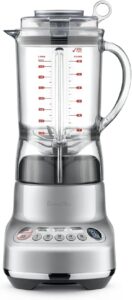

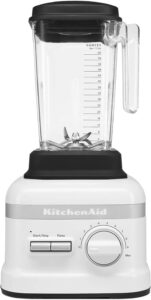
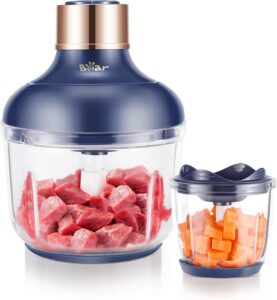
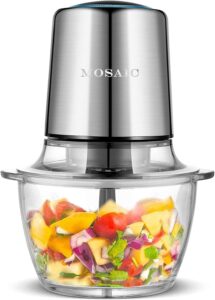








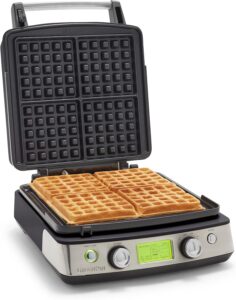

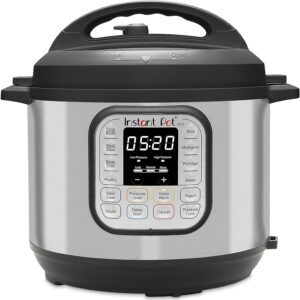
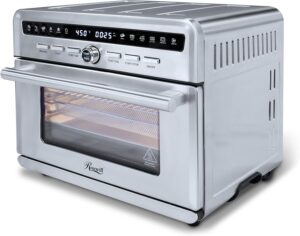
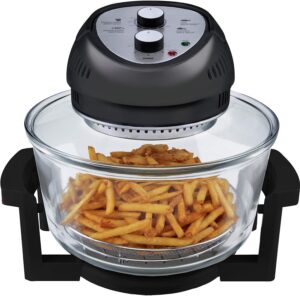
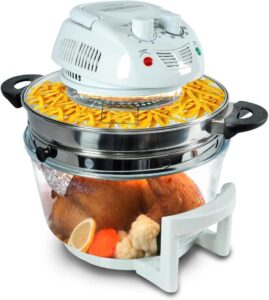
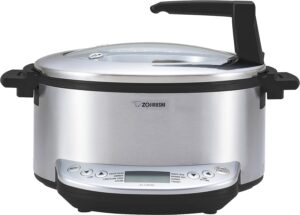



Pingback: 2023 Low Toxin Holiday Gift Guide -